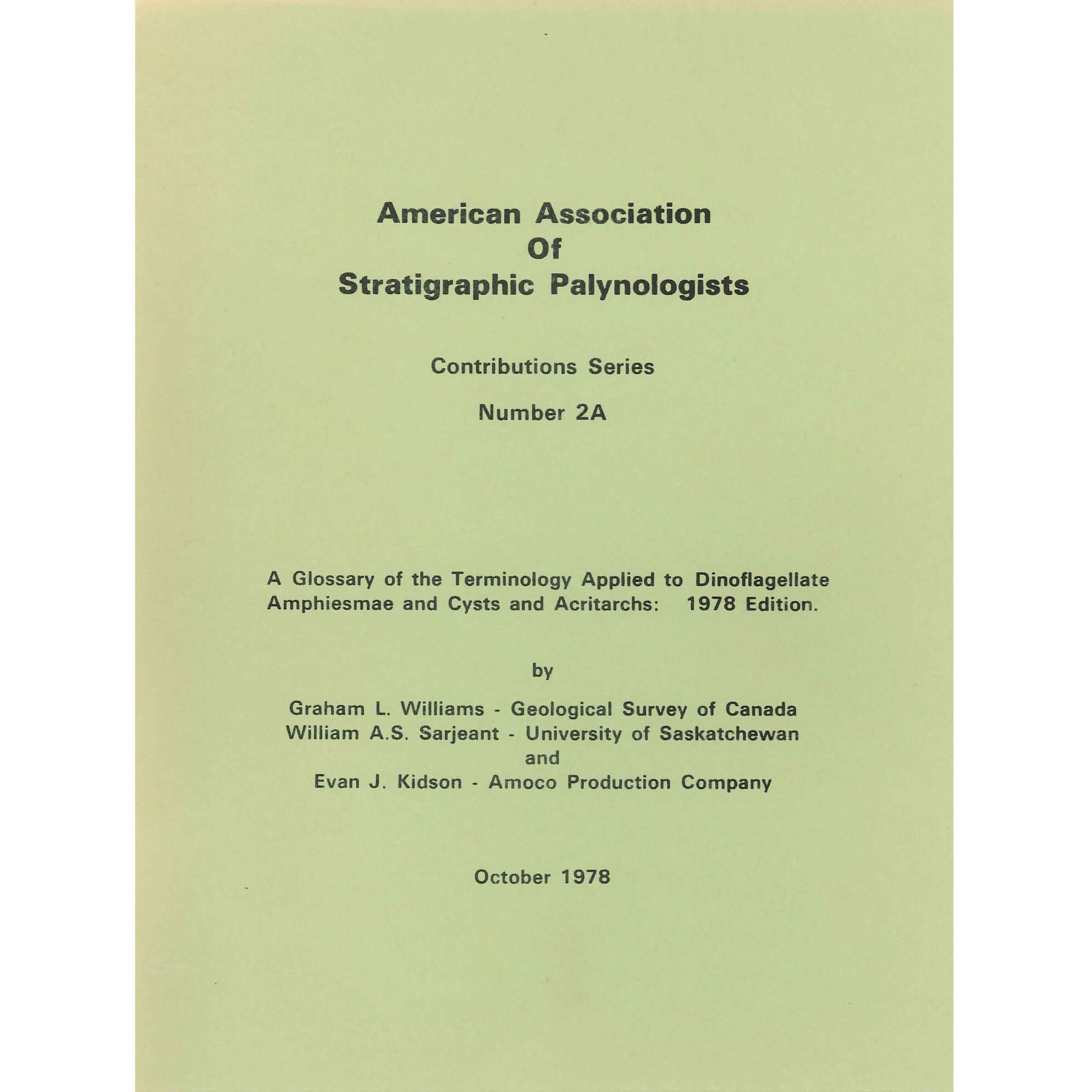Contributions Series Nr. 2A (PDF)
$4.00
A Glossary for the Terminology Applied to Dinoflagellate Amphiesmae and Cysts and Acritarchs: 1978 Edition
Graham L. Williams, William A. S. Sarjeant & Evan J. Kidson
1978
PDF only
127 pp.
Description
Introduction
The growing interest in fossil dinoflagellates as biostratigraphic and paleoecologic indicators has focused attention on the terminology used in descriptions of these microfossils. Until the last decade this was primarily derived from the terms used in the description of the amphiesmae of motile dinoflagellates, which had been developed by neontologists over a period of more than one hundred years. Fossil dinoflagellates, however, represent a different stage in the life cycle than the motile phase. Evitt (1961) postulated that most fossil dinoflagellates, including some hystrichospheres, are resting cysts produced subsequent to the motile phase or vegetative stage. Later studies, notably by Evitt and Davidson (1964) and Wall and Dale (1968, 1969, 1970) have confirmed the relationship of the cyst to the vegetative stage in extant dinoflagellates. Some cysts are typical hystrichospheres, while others are similar to the corresponding vegetative stage. To accommodate those hystrichospheres whose affinities with dinoflagellates could not be demonstrated, Evitt (1963) erected the Group Acritarcha.
Dale (1976), after an appraisal of Von Stosch’s (1972, 1973) studies, questioned the widely held belief that fossil dinoflagellates represent the encysted equivalent of the vegetative stage. Dale instead theorized that, “the cysts seen by palynologists represent zygotes in sexual cycles of dinoflagellates”. He believed that all fossil cysts are in actuality hypnozygotes.
The diametrically opposed views that fossil dinoflagellates are either resting cysts or hypnozygotes does not preclude the desirability of having separate terminologies for the amphiesma and the cyst. This philosophical outlook is finding increasingly wide acceptance, so that terms previously used in descriptions of both amphiesmae and cysts are tending to be restricted to the former. Notable proponents of a separate terminology for the encysted stage have been Downie and Sarjeant (1966), Evitt et al. (1977), Lentin and Williams (1976), and Williams (1978). Norris (1978) has advocated compromise, preferring to retain certain terms such as plate for both cyst and theca while using epitract and Hypotract for the cyst equivalent of the epitheca and hypotheca in the motile stage. The terminology currently in use for the dinoflagellate amphiesma is of long standing and has been defined by Fritsch (1956), Graham (1942), Kofoid (1907, 1909, 1911), Lebour (1925), Steidinger and Williams (1970), and others. Acritarch terminology has been specifically discussed by Cramer (1970), Kjellstrom (1971), Lister (1970b), Morbey (1975), and Tappan and Loeblich (1971).
The above works and others have resulted in a plethora of terms, some of which are used indiscriminately for the amphiesma and the cyst while others are restricted to either amphiesma or cyst or reserved specifically for acritarch.
